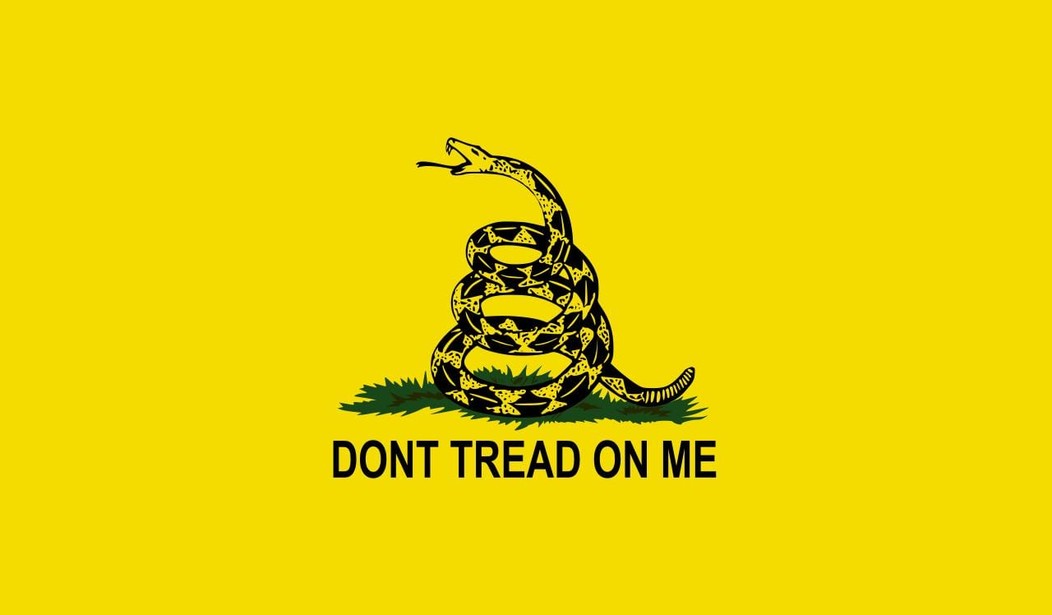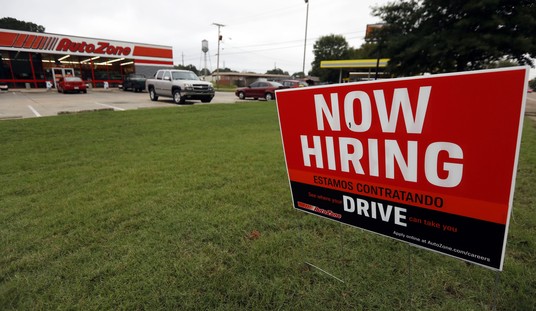A lawsuit brought on by the Equal Employment Opportunity Commission (EEOC) punished a business for a man wearing the Gadsden flag as a hat at his workplace. You’ll recognize the yellow flag as the coiled snaked with the words “DONT TREAD ON ME” written underneath, a motto of the Continental Army during the war against the British.
The reason the lawsuit came about was that a black individual found the hat racially provocative, and that it caused a hostile work environment.
From Shelton D. [pseudonym] v. Brennan, 2016 WL 3361228:
On January 8, 2014, Complainant filed a formal complaint in which he alleged that the Agency subjected him to discrimination on the basis of race (African American) and in reprisal for prior EEO activity when, starting in the fall of 2013, a coworker (C1) repeatedly wore a cap to work with an insignia of the Gadsden Flag, which depicts a coiled rattlesnake and the phrase “Don’t Tread on Me.”
Complainant stated that he found the cap to be racially offensive to African Americans because the flag was designed by Christopher Gadsden, a “slave trader & owner of slaves.”
And…
Complainant maintains that the Gadsden Flag is a “historical indicator of white resentment against blacks stemming largely from the Tea Party.”
The EEOC acknowledges that the flag was created under non-racial circumstances, and is used to promote causes that have nothing to do with race at all, but they stop logic from winning the day by taking into account the feelings of the person offended.
Moreover, it is clear that the flag and its slogan have been used to express various non-racial sentiments, such as when it is used in the modern Tea Party political movement, guns rights activism, patriotic displays, and by the military.
However, whatever the historic origins and meaning of the symbol, it also has since been sometimes interpreted to convey racially-tinged messages in some contexts.
In short, the EEOC has lawsuit because of the way it is interpreted by a few people. Despite the flag being completely unrelated to racism, the government has stepped in and agreed with someone who sees monsters where there are windmills.
This cannot mean anything good for the future of free speech, when someone’s completely innocuous words, or article of clothing can be interpreted as purposely offensive, and thus creates a hostile work environment. The government need only call it “harassment” to sidestep First Amendment rights for any business who allows messages they might not like, especially politically.
As Eugene Volokh of Washington Post says:
“…this is a case about the rules that all employers, public or private, must follow, on pain of massive legal liability. The harassment law rules (which, as I noted, are the same for private employers as for the federal government) are imposed by the government acting as sovereign — the area where the First Amendment should provide the most protection — not just the government acting as employer.”
How far can the EEOC take this? If being offended is all it takes to punish someone legally, then we can expect to see businesses wrapped up in lawsuits left and right because of a poster on the wall, a t-shirt someone wore, or words were spoken and the wrong person was in earshot.
Workplace harassment law has become a content-based, viewpoint-based speech restriction, including on core political speech. A pretty serious First Amendment problem…” says Volokh.
He’s correct. It’s not uncommon for government to explore various ways to get around the constitution, and this incursion into free speech is one that should be pounced on.














Join the conversation as a VIP Member